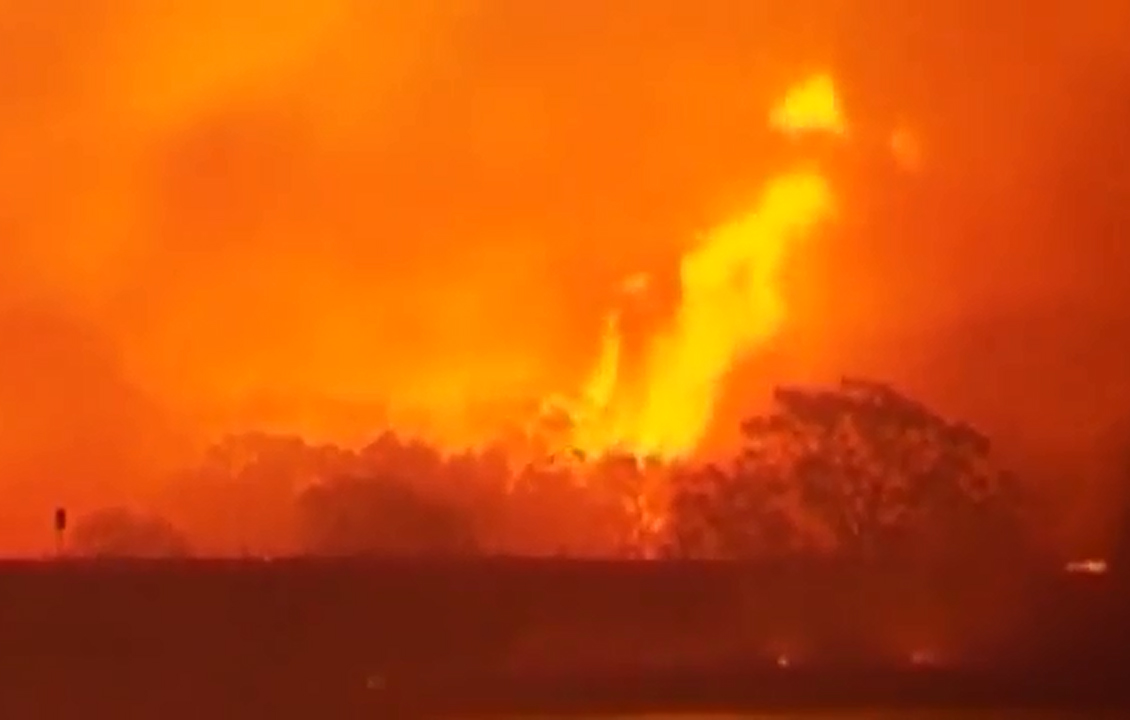Australia's Wildfires: Are Eucalyptus Trees to Blame?

The wildfires that are now threatening Sydney and other parts of New South Wales, Australia, are burning out of control, despite intensive firefighting efforts.
Hundreds of homes have been destroyed by fires raging along a 190-mile (306 kilometers) front, and much of the region is blanketed by thick, choking smoke. Dry, windy conditions are expected to worsen through Wednesday (Oct. 23), making the task of battling the infernos even more demanding, according to the Associated Press.
The fires are finding fuel in Australia's eucalyptus forests, which many experts blame for feeding wildfires that have blazed through the hills of California and other places where eucalyptus trees — native to Australia but now found throughout the world — have spread as an invasive species. [Raging Western Wildfires in Photos]
"Looking at the eucalyptus forest outside my window in Tasmania, I see a gigantic fire hazard," David Bowman, a forest ecologist at the University of Tasmania in Australia, told KQED. "On a really hot day, those things are going to burn like torches and shower our suburbs with sparks."
Designed to thrive after fires
Like many plants native to fire-prone regions, eucalyptus trees (aka gum trees in Australia) are adapted to survive — or even thrive — in a wildfire. Fallen eucalyptus leaves create dense carpets of flammable material, and the trees' bark peels off in long streamers that drop to the ground, providing additional fuel that draws ground fires up into the leaves, creating massive, fast-spreading "crown fires" in the upper story of eucalyptus forests.
Additionally, the eucalyptus oil that gives the trees their characteristic spicy fragrance is a flammable oil: This oil, combined with leaf litter and peeling bark during periods of dry, windy weather, can turn a small ground fire into a terrifying, explosive firestorm in a matter of minutes. That's why eucalyptus trees — especially the blue gums (Eucalyptus globulus) that are common throughout New South Wales — are sometimes referred to wryly as "gasoline trees."
Get the world’s most fascinating discoveries delivered straight to your inbox.
And after a bushfire sweeps through an area, the eucalyptus trees have an advantage over other plants. Their seed capsules open up when burned, and the seedlings thrive in freshly burned, ash-rich soils.
"Give a hillside a really good torching and the eucalyptus will absolutely dominate," Bowman told KQED. "They'll grow intensively in the first few years of life and outcompete everything."
Thousands of homes torched
The threat posed by eucalyptus groves spreading beyond Australia was highlighted in 1991, when a wildfire torched the hills surrounding Oakland, Calif. That conflagration killed 25 people and obliterated more than 3,000 homes, according to the Federal Emergency Management Agency (FEMA), and was blamed primarily on the thousands of eucalyptus trees found throughout the Oakland Hills.
Despite their well-earned reputation as a firefighter's worst nightmare, eucalyptus trees remain a favorite landscape specimen, renowned for fast-growing stands of tall shade trees that, according to some research, help repel insects through the same fragrant eucalyptus oil that's blamed for fueling wildfires.
That's why some Bay Area residents are opposing a plan proposed by FEMA, the University of California, Berkeley, and the city of Oakland (plus other local agencies) to clear the Oakland Hills of eucalyptus trees and other nonnative trees. Groups like the Hills Conservation Network contend that the clearing is actually an environmentally destructive effort to create space for new UC Berkeley facilities.
A 'dangerous plant'
But local experts are steadfast in declaring eucalyptus trees public fire enemy No. 1.
"Eucalyptus groves on steep hillsides — like those in the East Bay hills — are extremely flammable when hot … winds of late summer and fall start blowing and make control of a moving flame front impossible until the winds stop," Tom Klatt, UC Berkeley campus environmental manager, said in a report from the university's Division of Agriculture and Natural Resources NewsCenter.
"As a result, CalFIRE [the state's firefighting agency] has categorized the East Bay Hills, particularly Berkeley and Oakland, as a 'Very High Fire Hazard Severity Zone,'" Klatt added.
Eucalyptus trees also aren't winning any friends among ecologists concerned about invasive species. The California Invasive Plant Council (Cal-IPC) considers the eucalyptus a moderately serious problem, considering its rapid spread and its ability to displace native plant and animal communities.
And its worldwide spread — eucalyptus trees are now found on every occupied continent — presents a worrisome scenario in the face of global warming, which is expected to make wildfires more common.
"What the hell have humans done?" Bowman said. "We've spread a dangerous plant all over the world."
Follow Marc Lallanilla on Twitter and Google+. Follow us @livescience, Facebook & Google+. Original article on LiveScience.



